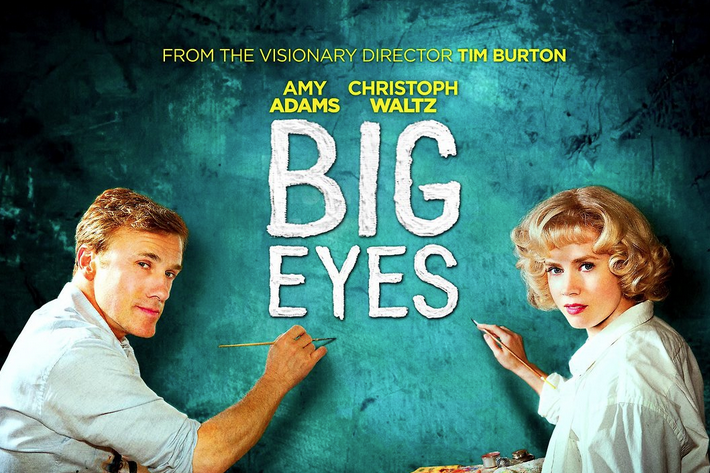While Natalie Portman as Alice Ayres/Jane Jones in Closer may have said, “Lying is the most fun a girl can have without taking her clothes off,” it would seem that Walter Keane proved that men can have just as much–if not more–fun lying to the point of forgetting the truth altogether. A reality-twister from early on, Walter met Margaret Ulbrich in 1953, a year after divorcing his first wife, at a fairground as she was creating charcoal drawings for cash (the scene is somewhat altered in the film version of the story).

Allured by her earnestness and raw talent, Walter attaches himself to her under the guise of being an artist himself, though his real gift lies in real estate. Vulnerable and afraid of losing custody of her only daughter, Jane (first played by Delaney Raye and later by Madeleine Arthur), Margaret goes against reason when Walter asks her to marry him in order to keep her ex-husband at bay. While, at first, it seems as though Margaret is finally living a fairy tale, it soon becomes clear that Walter isn’t all he’s cracked up to be–as immediately picked up on by her best friend, DeAnn (Krysten Ritter).

When Walter has the bitter realization that the art world is all about who you know, he decides to create his own gallery within the walls of Enrico Banducci’s famed hungry i nightclub in North Beach–which, of course, he pays to use. Displaying both his street scenes and Margaret’s “big eyes” paintings, the only interest people take is in the latter, prompting Walter to assume credit for the work after the flattering compliment of one of his early patrons.

Tim Burton’s stylized interpretation of the partially self-created prison Margaret employs after going along with her husband in this lie is played to perfection. Between hallucinations of normal people with huge eyes haunting Margaret at places like the grocery store and imagining her own reflection as one of her mammoth-eyed creations, Burton interacts with the emotions and psychosis of his protagonist with a gentleness that perfectly suits his own personal brand.

As for the soundtrack (which naturally includes longtime Burton collaborator Danny Elfman), Lana Del Rey’s contribution of two songs, “Big Eyes” and “I Can Fly,” lend just the right amount of sentimentality to the narrative–one that might not be taken as seriously without Del Rey considering the cartoonish perception of Burton’s work. Thus, the seamless melding of all these artists from different mediums–painting, film and music–combine so fantastically that it was almost worth it for Margaret Keane to have to undergo such a harrowing experience in order for her story to be told this way.




















